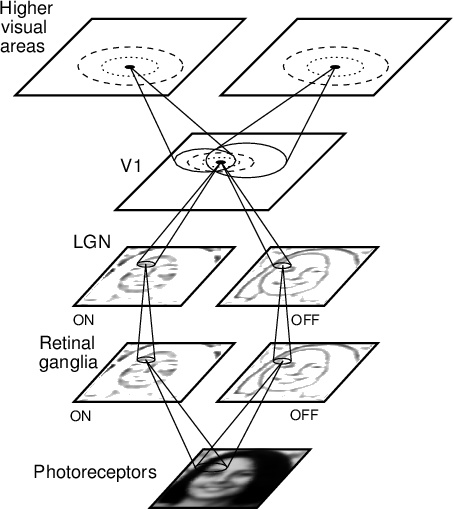
Click on the image to see a PDF version (for zooming in)
Fig. 17.2. Example Topographica model. In
Topographica, models are composed of interconnected sheets of
neurons. Each visual area is represented by one or more sheets in this
example model of the early visual system: For instance, the eye is
represented by an array of photoreceptors plus two sheets representing
retinal ganglion cells. Each of the sheets can be coarse or detailed,
plastic or fixed, as needed for a particular study. Afferent and
feedback connections link the different areas, and units within each
area can be connected using lateral connections. The afferent
connections are shown for one sample neuron in each sheet, and also
the lateral connections for the sample neurons in V1 and higher
areas. Similar models can be used for topographic maps in auditory,
somatosensory, and motor cortex.
|